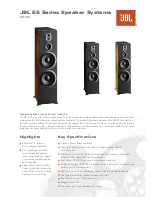
frame rate
The number of output video frames per second. Different outputs (such as the IP stream and the USB
stream) may use different frame rates. For streaming, higher frame rates use more bandwidth.
full-duplex
Simultaneous two-way (or multi-way) audio; conference participants at the near end can talk and still
hear the participants at the far end(s), as in a face-to-face meeting.
gamma
A setting that adjusts the range (gray density) between bright areas and shadows.
HID audio controls
(Human Interface Device) Controls to enable conference participants to use the conferencing client to
control the audio.
home (camera)
The settings to which the camera returns after a reboot or on exiting standby mode. Depending on the
camera's capabilities, home may include zoom, color and lighting settings, and pan/tilt position.
home button (microphone)
A One Touch trigger control on a tabletop microphone. The button can be associated with one macro in
momentary mode, or two macros in latching mode.
HTTP
HyperText Transfer Protocol. The magic that makes websites work.
HTTPS
HyperText Transfer Protocol Secure. The magic that uses encryption to make websites work securely.
See SSL certificate for more information.
IP address
Where a given device is on the IP network, logically. The IP address enables the network to route data
to the right device – and that's the reason IP address conflicts are bad.
IP address conflict
Two or more devices attempting to use the same IP address on a network. Results are unpredictable
but never good. You don't need to worry about this if you're not using static IP addresses.
LED
Light-Emitting Diode. An indicator light.
macro
A defined sequence of commands that a device performs in response to a trigger event.
multicast flow (Dante)
A flow that can be routed to all receiving devices in the system.
near end
(conferencing) Your location in a conference. When you mute the video, your camera stops sending
near-end video.
NTP
Network Time Protocol. Ensures that NTP-enabled devices on the network all show the same system
time, so timestamps are accurate.
pairing
The process of "teaching" two specific devices to recognize each other. Pair cameras to the EasyIP
Decoder on its Directory page.
157
Complete Manual for EasyIP Systems













































